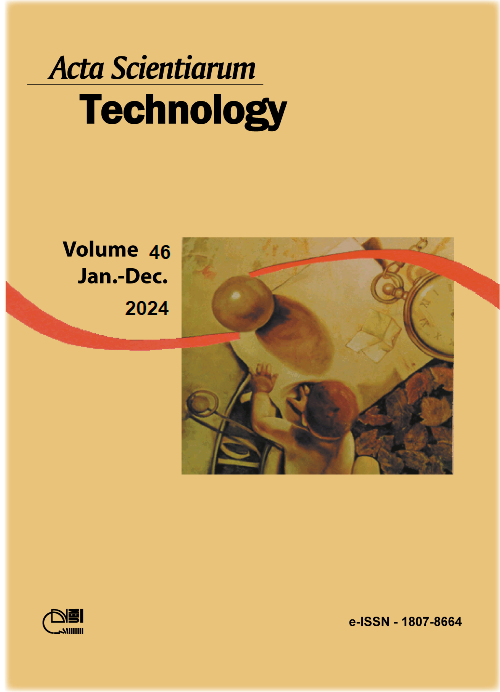Free vibration analysis employing strain gradient notation four-node plane elements and considering the effects of parasitic shear
DOI:
https://doi.org/10.4025/actascitechnol.v46i1.65293Palavras-chave:
in-plane free vibration; finite element method; strain gradient notation; parasitic shear; shear locking; spurious terms.Resumo
In this work, plane stress free vibration is performed using four-node elements formulated using strain gradient notation. Accurate results are sought, and the effects of parasitic shear are investigated. By applying strain gradient notation, which is a physically interpretable notation, parasitic shear terms are identified a priori in the shear strain expressions of the four-node plane element. Parasitic shear is the source of shear locking in that element, and the a priori removal of the parasitic shear terms corrects the element for locking. Several studies in the literature show that this modeling error causes improper behavior of the element in bending, which affects the computed results of stress and displacements of the structure. Based on this, this work applies strain gradient notation to examine the effects of parasitic shear on the natural frequencies and corresponding mode shapes of plane stress structures. The results are compared with literature results, and with the isoparametric FEM formulation modeled by ANSYS software. It is observed that parasitic shear has a higher preponderance in coarse meshes of flexural vibration modes. Furthermore, the deleterious effects are emphasized as bending deformation becomes more important in the model. Strain gradient notation shows advantages in the numerical aspect and successfully eliminates the parasitic shear terms from the four-node element. The problems studied here display accurate results.
Downloads
Downloads
Publicado
Como Citar
Edição
Seção
Licença
DECLARAÇíO DE ORIGINALIDADE E DIREITOS AUTORAIS
Declaro que o presente artigo é original, não tendo sido submetido í publicação em qualquer outro periódico nacional ou internacional, quer seja em parte ou em sua totalidade.
Os direitos autorais pertencem exclusivamente aos autores. Os direitos de licenciamento utilizados pelo periódico é a licença Creative Commons Attribution 4.0 (CC BY 4.0): são permitidos o compartilhamento (cópia e distribuição do material em qualqer meio ou formato) e adaptação (remix, transformação e criação de material a partir do conteúdo assim licenciado para quaisquer fins, inclusive comerciais.
Recomenda-se a leitura desse link para maiores informações sobre o tema: fornecimento de créditos e referências de forma correta, entre outros detalhes cruciais para uso adequado do material licenciado.















